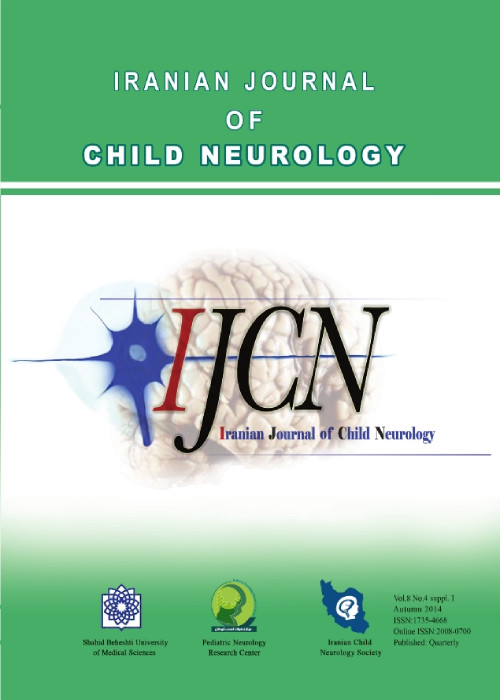Predictors of Leisure Participation in 6 -14 Years Old Children with Cerebral Palsy: Structural Equation Modeling
The aim of this study was to test a model of child,family and environment and identify factors affecting intensity of leisure participation by children with cerebral palsy (CP).
in this cross-sectional study,232 children with cerebral palsy (141 boys and 91 girls), age range 6 to 14 years and their parents were selected from 4 schools with special needs and 5 rehabilitation center through available sampling in Shiraz city. To evaluate leisure participation, we used the Persian version of Children’s Assessment of Participation and Enjoyment (CAPE) completed by participants. Demographic questionnaires, Craig Hospital Inventory of Environmental Factors (CHIEF), Strengths and Difficulties Questionnaire (SDQ), Family Environmental Scale (FES), SPARCLE cognitive level and parent's version of Gross Motor Function Classification System, Manual Ability Classification System and Communication Function Classification System were send to parents with some necessary explanations and completed. Structural equation modeling was used to test the model hypothesis. SPSS18 and AMOS16 were used for statistical data analysis.
Comparative fit index indicated a moderate to good fit model. The presented model explains 44% of the variance for intensity of participation. Constructs such as Family Activity Orientation with standardized total effect of (.31) and path coefficients P< .05 has shown most significant direct effect on participation, after that higher gross motor function (-.26), higher manual ability (-.19), communication function (-.17), higher cognitive level (-.16), more brothers and sisters in family (.15) and less emotional- behavioral problems (-.15) have shown direct effect on intensity of participation. Family Structures & Relationships (.17) and unsupportive environment constructs (-.14) have shown indirect but significant effect (P< .05). The relationship between family education level and income with participation were not significant (P>.05).
Intensity of CP children participation is influenced by child, family and environmental factors. Parent's knowledge of recreational activities and their preferences to participation in leisure and recreations give children more opportunities to participate. higher gross motor function, manual ability, and communication function have an important role in participation. Family structure means family cohesion, roles organization, and conflicts between family members and also encountering physical, attitudinal and structural barriers in the home and community change children participation pattern indirectly. This study suggests therapists to support children’s behavior, family relationships and involvement in community activities and optimizing physical function for children who have limitations in self-mobility to enhance their participation.
- حق عضویت دریافتی صرف حمایت از نشریات عضو و نگهداری، تکمیل و توسعه مگیران میشود.
- پرداخت حق اشتراک و دانلود مقالات اجازه بازنشر آن در سایر رسانههای چاپی و دیجیتال را به کاربر نمیدهد.



